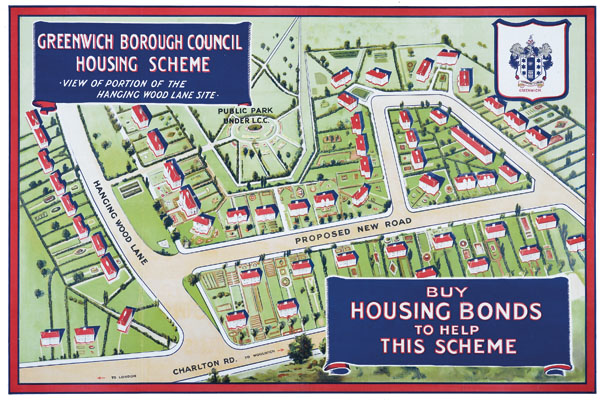This book purports to be a history not of London but of its suburbs. In the end this amounts to much the same thing, because the author is referring not to the present suburbs but to all the suburbs of London that have ever been, from Southwark onwards. After Boadicea sacked their original wooden settlement, the Romans rebuilt it using stone, putting up walls that lasted for almost 2,000 years. Within these walls was the city, and ‘without’ were the suburbs. This book, then, is a history of London minus the Square Mile (in other words of the 599 other square miles).
The epithet ‘suburban’ has tended in latter years to be used snootily by those who regard themselves as fully-detached cosmopolitans. Margaret Thatcher and Finchley come to mind — though of course Thatcher actually lived in Chelsea, not far from the Arts Club. The truth is that, with few exceptions, people travel to work. They commute. They are suburban. Crouch End, for example, is full of journalists and actors and musicians: the last thing they would describe themselves as being is suburban, but that is what they are. In fact almost 70 per cent of London’s population is suburban. To be urban you have either to be very well-off or the opposite.
The story of London is broadly familiar. The royals and government went west and industry and commerce went east. Playwrights and pimps went south. North of the Euston Road were fields and the odd village before the coming of trains.
Starting with the Romans, Nick Barratt runs us through Alfred, Edward the Confessor, 1066, the Dissolution of the Monasteries, the Black Death, the Great Fire and the Gordon Riots until we get to the railways, when suburbia proper begins to flourish. Although there had been forms of coach transport from Tudor times, it had been expensive. On the whole, if you worked in London you had to live in London. The railways changed this.
The population of what Barratt calls ‘inner London’, comprising Hammersmith, Fulham, Kensington, Chelsea, Westminster, Camden, Islington, Hackney, Tower Hamlets, Greenwich, Lewisham, Southwark, Lambeth and Wandsworth, as well as the City itself, almost doubled in the first third of the 19th century, more and more people being squeezed into the existing metropolis. TheIndustrial Revolution was in full flow, the empire was expanding. The docks grew.
The great railway terminals were built in response, ‘towards the edge of built-up London’ — Euston (1838), Fenchurch Street (1841), London Bridge (1840s), Victoria (1850s), King’s Cross (1852), Paddington (1854), Waterloo (1848), Liverpool Street (1875 — on the site of Bedlam; some might say little has changed). Building these stations and laying lines caused massive disruption that makes one’s annoyance at Crossrail seem petty. Tens of thousands were rendered homeless; even the dead were not left in peace: George Gilbert Scott’s St Pancras required that the old St Pancras and Islington graveyard be exhumed, ‘by, among others, the young Thomas Hardy’.
Starting in 1860 the Tube was developed, driven by rival companies until amalgamated by an American tycoon, name of Yerkes, under the title the Underground Electric Railways Company of London. While the railways had originally been built to ‘supply provisions to the metropolis’, the underground served people. It turned villages into suburbs, especially at junctions such as Wimbledon, Willesden and Clapham. Statistics can occasionally tell a big story: in 1851 the population of Greater London was 2.65 million. By 1900 it was 6.5 million. Almost a million extra people a decade. They had to live somewhere.
London’s ‘great growth spurt’ took place once the Underground was more or less complete, and went on until the Luftwaffe interrupted. We know that what they failed to do London planners more than made up for, covering the city with a concrete acne of high-rise blocks and utilitarian civic offices.
The roads have always been a disaster. One chilling paragraph here describes a GLC plan for three concentric rings around the capital. There are urban bien-pensants who affect to love the Westway, but the idea of something similar ringing the capital in ghastly nooses does not bear thinking about. In the event only the outer ring was built: the M25.
The best bits of this book are the well-chosen quotations from great observers: Pepys (his is the first recorded mention of the Hackney carriage), John Evelyn, Dickens (describing Jacob’s Island in Oliver Twist: ‘every repulsive lineament of poverty, every loathsome indication of filth, rot and garbage’), Wodehouse and Priestley (both mocking the ‘semi-detached villas, all looking exactly alike’), and Orwell (though Betjeman gets a measly two mentions and only one quotation). The second best bits are the illustrations, which are plentiful.
This is a rather dull book full of fascinating information. It would have made a good offbeat encyclopaedia, the sort of thing Google cannot do.






Comments